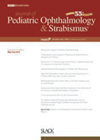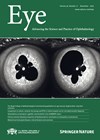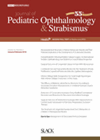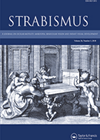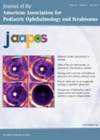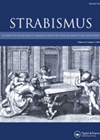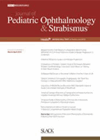
Journal Reviews
Use of polypropylene suture with glaucoma drainage tubes
The authors overview surgical techniques for initial non-valved glaucoma drainage device tube placement and a glaucoma drainage device tube extension using polypropylene suture as a guide wire and stabiliser in paediatric patients. The detailed technique for tube placement and tube...
Impact of COVID-19 pandemic on US paediatric ophthalmology
The authors designed and distributed a survey to assess the economic impact of the pandemic on US paediatric ophthalmologists over the sustained lockdown period of 18 months in 2020/21. They captured information on clinical and surgical revenue, staff hiring and...
Outcomes of reinjection of Ranibizumab for reactivation of retinopathy of prematurity
The authors present their data from Egypt assessing the effects of Ranibizumab reinjection for neonates with retinopathy of prematurity (ROP). Doses given were 0.25mg/0.025mL. They screened 2318 infants with 115 (5%) of infants with a mean post menstrual age (PMA)...
Cycloplegic autorefraction versus cycloplegic retinoscopy
This cross-sectional study compared cycloplegic autorefraction using VISUREF 100 table top and keratometer device (Zeiss) versus cycloplegic retinoscopy. The study included 47 children (94 eyes) of which 55 eyes were excluded because of ocular disease or not aged three to...
Characteristics of age-related distance esotropia
The primary aim of this study was to describe clinical characteristics and natural history of age-related distance esotropia (ARDET) within an adult cohort over a 20-year period. This was a retrospective review of 73 patients from 751 with adult onset...
Four rectus muscle surgery for infantile nystagmus syndrome
The authors present a case report of infantile nystagmus syndrome (INS) with abnormal head posture (AHP) of face turn, head tilt and chin depression with a single-step surgery of all four horizontal rectus muscles. The case was a 26-year-old male...
Features of childhood cases of sixth nerve palsy
Based on limited information available for cranial nerve palsies in children, the authors aimed to collect data on new onset paediatric sixth nerve palsies in a UK population. This was a retrospective study over 10 years for children aged <18...
Review of bupivacaine use in treatment of strabismus
This review aimed to assess the applications of bupivacaine (B) in the non-surgical treatment of strabismus in human and animal studies. Animal studies show that singly-innervated fibres with low concentrations of mitochondria and developed sarcoplasmic reticulum are more affected by...
How reliable is the postoperative diplopia test and can it predict postoperative outcomes?
A two-phase process evaluating the postoperative diplopia test is presented. A standardised operating procedure was used for conducting all postoperative diplopia tests for this study which is described in the paper. Phase one focused on reliability, test-retest and interobserver. Adults...
How long to wait to refract after instilling cyclo drops for children with brown irides?
This study aimed to assess the time needed for effective cycloplegia after instillation of 1% cyclopentolate drops in children with brown irides. The study recruited 161 consecutive patients aged three to 16 years. All had refraction on arrival, then instillation...
Management options for microphthalmia with orbital cyst with / without visual potential
The authors present six cases (seven eyes) of congenital microphthalmia and orbital cyst. These cases were newborn mainly with one aged 20 years. There were four females and two males and two of seven eyes had a visual potential of...
Use of YouTube videos to show surgical techniques for paediatric cataract surgery
This study aimed to assess the quality of the most highly viewed paediatric cataract surgery videos regarding surgeon proficiency and execution of key techniques. A search for congenital cataract surgery and paediatric cataract surgery was made in YouTube. The top...

